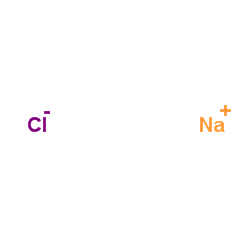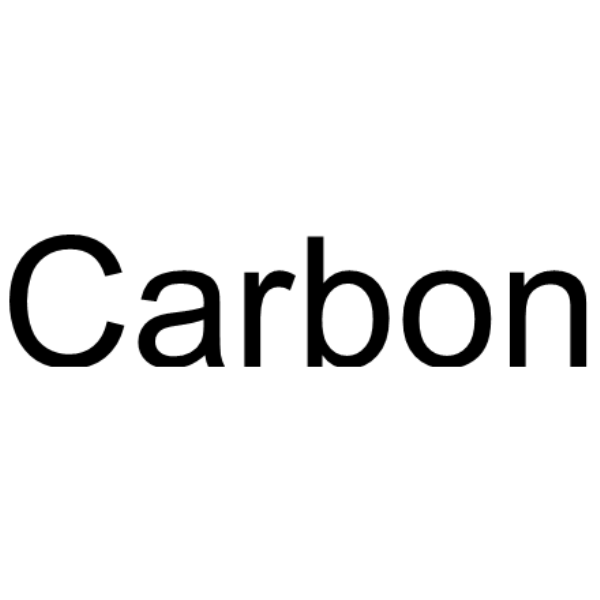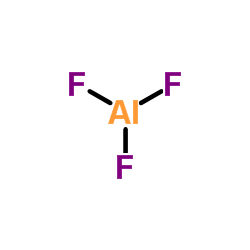1302-42-7
| 中文名 | 铝酸钠 |
|---|---|
| 英文名 | sodium aluminum oxide |
| 中文别名 | 偏鋁酸鈉 |
| 英文别名 |
Sodium Aluminate
EINECS 215-100-1 Granular clay sodiummetaaluminate Dynagrout Manfloc NaAlO2 Aluminate,sodium SodiumaluminatecaHO Dynaflock Sodium metaaluminate Natrium-Aluminat MFCD00801010 Amerfloc 2 |
| 密度 | 1.5 g/cm3 |
|---|---|
| 熔点 | 1800°C |
| 分子式 | Al2Na2O4 |
| 分子量 | 165.95600 |
| 精确质量 | 165.93800 |
| PSA | 43.37000 |
| 外观性状 | 无臭,稻黄色的液体 |
| 折射率 | 1.566 |
| 储存条件 | 应贮存于通风、干燥的库房中。 |
| 稳定性 | 1.如果遵照规格使用和储存则不会分解,未有已知危险反应,避免酸、二氧化碳、水分/潮湿, 2.高温熔融产物为白色粉末,易溶于水,在水中溶解后析出氢氧化铝沉淀,水溶液呈碱性,pH值为12.3。不溶于乙醇,在空气中易吸收水分和二氧化碳。 溶于水,不溶于醇。有吸湿性。水溶液呈强碱性,能渐渐吸收水分而成氢氧化铝,加入碱或带氢氧根多的有机物则较稳定。与酸类发生剧烈反应,与铁盐发生反应释出氢气。溶于水,不溶于醇。水溶液呈强碱性,能渐渐吸收水分而分解生成氢氧化铝,加入碱或带氢氧根多的有机物则较稳定。广泛用于工业用水和自来水的净化,能降低水的硬度和加快悬浮固体的沉降。与硅酸盐化合能改进分子筛结晶。可作为石油烃转化的催化剂和载体,以及制造无定形氧化铝催化剂的原料。也用于制造稳定的铝胶溶液。 |
| 分子结构 | 1、摩尔折射率:无可用的 2、摩尔体积(cm3/mol):无可用的 3、等张比容(90.2K):无可用的 4、表面张力(dyne/cm):无可用的 5、介电常数:无可用的 6、极化率(10-24cm3):无可用的 7、单一同位素质量:163.922274 Da 8、标称质量:164 Da 9、平均质量:163.9402 Da |
| 计算化学 | 1.疏水参数计算参考值(XlogP):无 2.氢键供体数量:0 3.氢键受体数量:2 4.可旋转化学键数量:0 5.互变异构体数量:无 6.拓扑分子极性表面积40.1 7.重原子数量:4 8.表面电荷:0 9.复杂度:13.5 10.同位素原子数量:0 11.确定原子立构中心数量:0 12.不确定原子立构中心数量:0 13.确定化学键立构中心数量:0 14.不确定化学键立构中心数量:0 15.共价键单元数量:2 |
| 更多 | 1. 性状:白色无定形结晶粉末,有吸湿性。 2. 密度(g/mL,25℃):1.58 3. 相对蒸汽密度(g/mL,空气=1):未确定 4. 熔点(ºC):1800 5. 沸点(ºC,常压):未确定 6. 沸点(ºC,0.05mmHg):未确定 7. 折射率(n20/D):1.566-1.595 8. 闪点(ºC):未确定 9. 比旋光度(º):未确定 10. 自燃点或引燃温度(ºC):未确定 11. 蒸气压(mmHg,20ºC):未确定 12. 饱和蒸气压(kPa,60ºC):未确定 13. 燃烧热(KJ/mol):未确定 14. 临界温度(ºC):未确定 15. 临界压力(KPa):未确定 16. 油水(辛醇/水)分配系数的对数值:未确定 17. 爆炸上限(%,V/V):未确定 18. 爆炸下限(%,V/V):未确定 19. 溶解性:溶于水,不溶于乙醇 |
|
Section 1: Product Identification Chemical Name:Sodium aluminate, contains approx. 8% H2O (99.9%-Al) CAS Registry Number:1302-42-7 Formula:NaAlO2 EINECS Number:215-100-1 Chemical Family:inorganic compound Synonym:Aluminum sodium oxide
Section 2: Composition and Information on Ingredients IngredientCAS NumberPercentACGIH (TWA)OSHA (PEL) Title Compound1302-42-790%no datano data Section 3: Hazards Identification Emergency Overview:Corrosive to eyes, skin and respiratory tract. May be harmful if swallowed Primary Routes of Exposure:Ingestion, inhalation Eye Contact:Causes burns to the eyes. Skin Contact:Causes burns to the skin. Inhalation:Corrosive to the nose, mucous membranes and respiratory tract. Ingestion:No information on the physiological effects of ingestion. Acute Health Affects:Corrosive to skin, eyes and respiratory tract. Chronic Health Affects:No information available on long-term chronic effects. NTP:No IARC:No OSHA:No SECTION 4: First Aid Measures Immediately flush the eyes with copious amounts of water for at least 10-15 minutes. A victim may need Eye Exposure: assistance in keeping their eye lids open. Get immediate medical attention. Wash the affected area with water. Remove contaminated clothes if necessary. Seek medical assistance if Skin Exposure: irritation persists. Remove the victim to fresh air. Closely monitor the victim for signs of respiratory problems, such as difficulty Inhalation: in breathing, coughing, wheezing, or pain. In such cases seek immediate medical assistance. Seek medical attention immediately. Keep the victim calm. Give the victim water (only if conscious). Induce Ingestion: vomiting only if directed by medical personnel. SECTION 5: Fire Fighting Measures Flash Point:not applicable Autoignition Temperature:none Explosion Limits:none Extinguishing Medium:none required If involved in a fire, fire fighters should be equipped with a NIOSH approved positive pressure self-contained Special Fire Fighting Procedures: breathing apparatus and full protective clothing. Hazardous Combustion andNone Decomposion Products: Unusual Fire or Explosion Hazards: No unusual fire or explosion hazards. SECTION 6: Accidental Release Measures Spill and Leak Procedures:Small spills can be mixed with powdered sodium carbonate or ground limestone and swept up. SECTION 7: Handling and Storage Handling and Storage:Store material in a tightly sealed bottle away from moisture. SECTION 8: Exposure Controls and Personal Protection Eye Protection:Always wear approved safety glasses when handling a chemical substance in the laboratory. Skin Protection:Wear protective clothes and gloves. Consult with glove manufacturer to determine the proper type of glove. Ventilation:If possible, handle the material in an efficient fume hood. In the absence of adequate ventilation a respirator should be worn. The use of a respiratory requires a Respirator: Respirator Protection Program to be in compliance with 29 CFR 1910.134. Ventilation:If possible, handle the material in an efficient fume hood. Additional Protection:No additional protection required. SECTION 9: Physical and Chemical Properties Color and Form:white pwdr. Molecular Weight:81.97 Melting Point:1800° Boiling Point:no data Vapor Pressure:no data Specific Gravity:no data Odor:none Solubility in Water:soluble SECTION 10: Stability and Reactivity Stability:hygroscopic Hazardous Polymerization:no hazardous polymerization Conditions to Avoid:none Incompatibility:Active metals Decomposition Products:none SECTION 11: Toxicological Information RTECS Data:No information available in the RTECS files. Carcinogenic Effects:none Mutagenic Effects:none Tetratogenic Effects:none SECTION 12: Ecological Information Ecological Information:No information available SECTION 13: Disposal Considerations Disposal:Dispose of according to local, state and federal regulations. SECTION 14: Transportation Shipping Name (CFR):Sodium aluminate, solid Hazard Class (CFR):8 Additional Hazard Class (CFR):NA Packaging Group (CFR):III UN ID Number (CFR):UN# 2812 Shipping Name (IATA):Sodium aluminate, solid Hazard Class (IATA):8 Additional Hazard Class (IATA):NA Packaging Group (IATA):III UN ID Number (IATA):UN# 2812 SECTION 15: Regulatory Information TSCA:Listed in the TSCA inventory. SARA (Title 313):Title compound not listed Second Ingredient:none SECTION 16 - ADDITIONAL INFORMATION N/A |
|
毒理学数据: 吸入铝粉尘主要损害肺,称铝土肺,慢性症状有消瘦,极易疲劳。 生态学数据: 对是水稍微有危害的不要让未稀释或大量的产品接触地下水、水道或者污水系统,若无政府许可,勿将材料排入周围环境。
|
| 上游产品 9 | |
|---|---|
| 下游产品 1 | |











